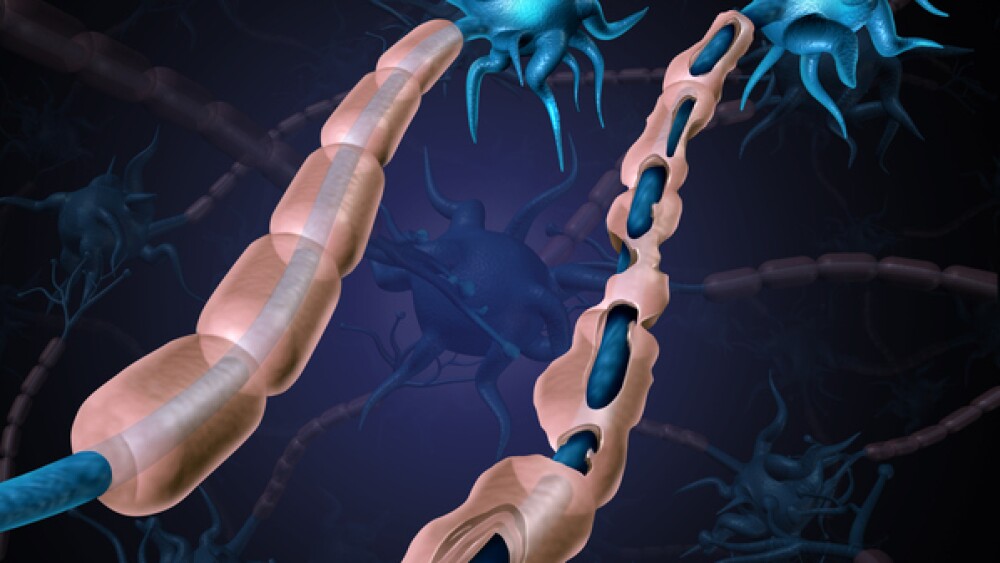NEWTON, MA, December 9, 2013 – AesRx, LLC announced that it, in collaboration with the National Institutes of Health, presented results of the Phase 1/2a clinical trial of its anti-sickling agent Aes-103 at the 2013 American Society of Hematology (ASH) annual meeting, with data showing a significant reduction of pain in sickle cell disease (SCD) patients following single dosing. Chronic and recurring pain are among the most common symptoms of the disease.
The recently completed Phase 1/2a study assessed the safety and tolerability of Aes-103 in stable SCD patients, as well as its pharmacokinetic and pharmacodynamic properties. In a double-blind, placebo-controlled, dose-escalation trial, 18 adult patients with stable SCD on or not on hydroxyurea treatment were given single oral doses of Aes-103 of 300, 1000, 2000 or 4000 mg, as well as 1000 mg q.i.d. for one day. Overall, Aes-103 was shown to be safe and well tolerated and no patients were discontinued due to adverse events.
For those patients (n=15 dose sessions) presenting with measurable pain at baseline (a score of 2 or more on the 0-10 Numerical Pain Rating Scale [NPRS]), pain was reduced in a dose-dependent and time-dependent manner in patients receiving Aes-103 compared to those receiving placebo. Reductions in pain became apparent starting about 1-2 hours after Aes-103 administration. Pain differences between Aes-103-treated and placebo-treated patients were in the range of 3-4 points on the NPRS scale. The differences between treatments peaked at 8 hours post-dose (p<=0.005) and persisted at 12 hours (p<=0.05) and 24 hours (p<=0.05) post-dose. Reductions in pain were highly correlated with the presence of Aes-103 in the red blood cell lysate (correlation coefficient = -0.917; p<0.0001). In contrast, patients with no pain shortly prior to dosing showed no change in pain levels over the next 24 hours in both the placebo and Aes-103 groups.
“We are extremely pleased with the outcome of our Phase 1/2a study,” commented Stephen R. Seiler, AesRx’s Chief Executive Officer. “The results clearly confirm Aes-103’s safety and support its promise as a disease-modifying treatment for sickle cell disease. We are particularly encouraged by the effect of Aes-103 on sickle cell pain, which presents an under-treated symptom of patients suffering from this disorder.”
Additional signals of potential anti-sickling activity were observed, including higher hemoglobin levels in patients receiving Aes-103 compared to placebo, as well as a reduction in LDH (a biomarker of red blood cell hemolysis). Red blood cell (RBC) sickling is a hallmark of sickle cell disease and, among other symptoms, results in more rapid RBC death in sickle cell patients than in those without the disease. Rapid RBC death in turn leads to anemia (lower levels of hemoglobin) and a rupturing of the RBC membrane, which releases LDH into the bloodstream.
Based on the positive results of AesRx’s Phase 1 and Phase 1/2a studies, a Phase 2 study has been initiated in the UK (see http://www.clinicaltrials.gov/ct2/show/NCT01987908/. It is planned as a randomized, double-blind controlled study of Aes-103 or placebo with daily dosing for 28 days in patients with sickle cell anemia.
The reported Phase 1/2a study in sickle-cell patients and the previous Phase 1 study in healthy subjects are part of a multi-institute, public-private translational research collaboration involving AesRx and two separate components of the National Institutes of Health (NIH): the National Heart, Lung, and Blood Institute (NHLBI) and the National Center for Advancing Translational Sciences (NCATS) through its Therapeutics for Rare and Neglected Diseases (TRND) program. Aes-103 is one of the first molecules to enter clinical development in the TRND program.
“TRND researchers have worked collaboratively with the AesRx team to provide the clinical and regulatory resources necessary to move Aes-103 through pre-clinical development and into human clinical trials,” said John McKew, Ph.D., acting director of NCATS Division of Pre-Clinical Innovation and director of TRND. “Through TRND, NCATS supports innovative methods and approaches to developing breakthrough treatments for patients who have urgent and unmet medical needs.”
In sickle cell disease, red blood cells deform into sickle shapes that can block small blood vessels and lead to serious conditions including chronic pain and acute painful crisis. Aes-103 directly inhibits polymerization (sickling) by stabilizing sickle hemoglobin in the R state. To AesRx’s knowledge, Aes-103 is the only direct anti-sickling agent in or near clinical development. The U.S. Food and Drug Administration (FDA), has designated Aes-103 as an orphan drug for the treatment of sickle cell disease.
Note: References to the National Institutes of Health, its programs or its staff, should not be viewed as an endorsement or implied endorsement of AesRx, its products or services. Additional information about sickle cell disease is available at:
Sickle Cell Anemia, http://www.nhlbi.nih.gov/health/dci/Diseases/Sca/SCA_WhatIs.html
Sickle Cell Disease, http://www.cdc.gov/NCBDDD/sicklecell/index.html
About AesRx
AesRx is a biopharmaceutical company dedicated to the development of treatments for two orphan diseases. The Company’s lead program (Aes-103) is targeted to the treatment of sickle cell disease. Sickle cell disease is a recessive disorder of the hemoglobin which can lead to a wide range of serious, sometimes life-threatening, conditions including: chronic hemolytic anemia, chronic pain and acute painful crisis, stroke, acute chest syndrome, and cumulative damage to tissues and organs. More than 13 million individuals world-wide are afflicted with sickle cell disease. Aes-103 works by stabilizing sickle hemoglobin in the high oxygen affinity R-State. Sickle hemoglobin in the R-State cannot polymerize (sickle). In addition, data recently developed at the NIH indicates Aes-103 can stabilize red blood cells against physical shear stress. Vascular inflammation is a common feature of SCD. It exposes the sickle red blood cells to shear stress which in turn leads to cell death. Aes-103 may help prevent this.
AesRx’s second development program, Aes-210, is targeted to treat certain inflammatory diseases of the lower intestine, including distal ulcerative colitis, pouchitis and radiation induced proctitis.
For more information about AesRx and Aes-103, see AesRx.com.
This press release contains certain statements that may be forward-looking within the meaning of Section 27a of the Securities Act of 1933, as amended, including statements relating to the product portfolio, pipeline and clinical programs (collectively the “Products”) of AesRx LLC (the “Company”), the market opportunities for the Products, the potential effectiveness of the Products based on the interpretation of past and/or planned pre-clinical or clinical data and the Company’s goals and objectives. These statements are subject to numerous risks and uncertainties.
Help employers find you! Check out all the jobs and post your resume.




